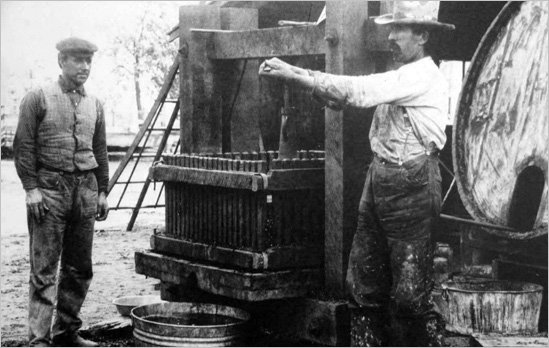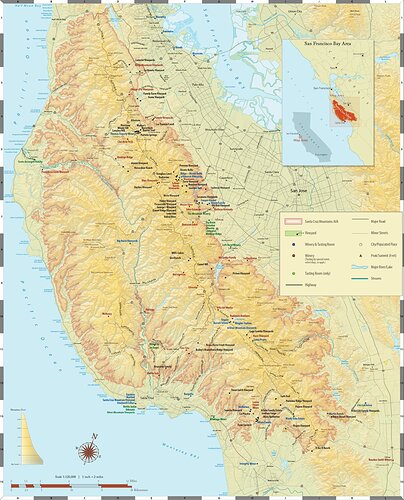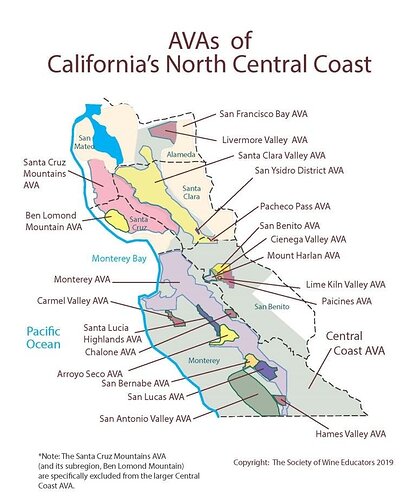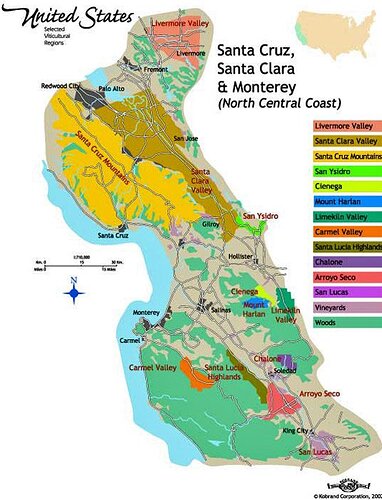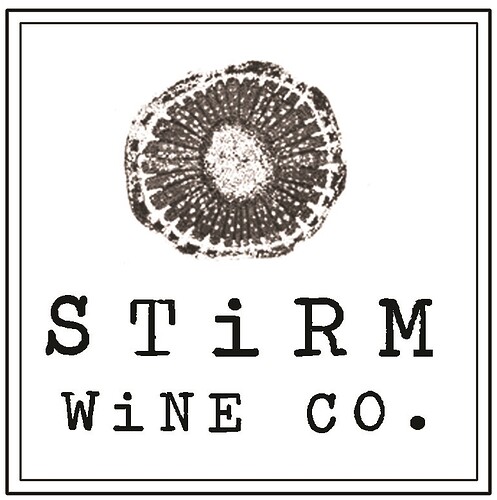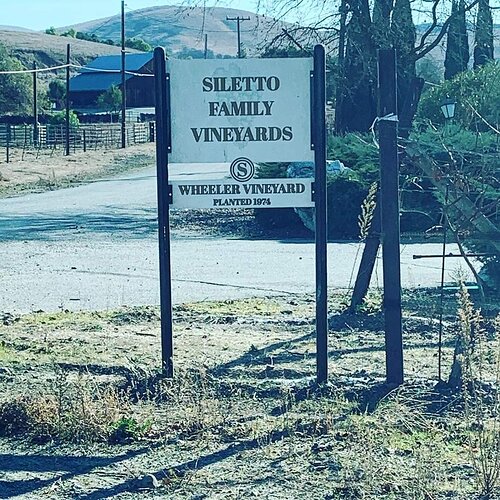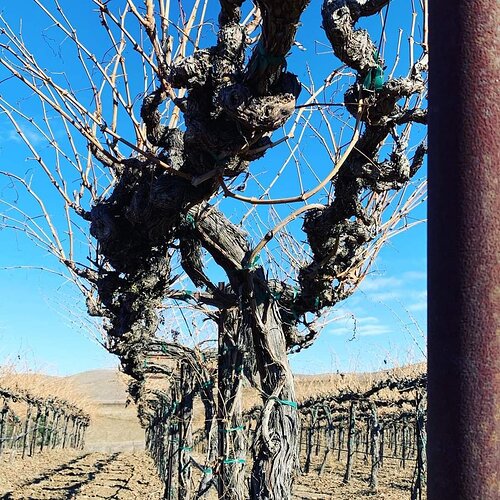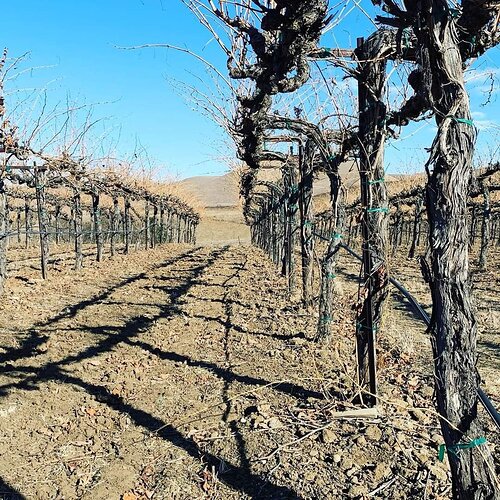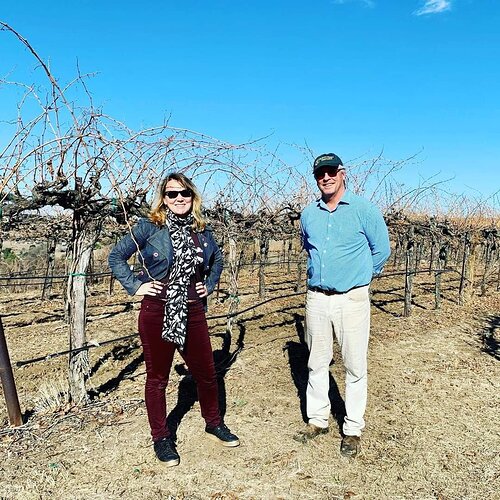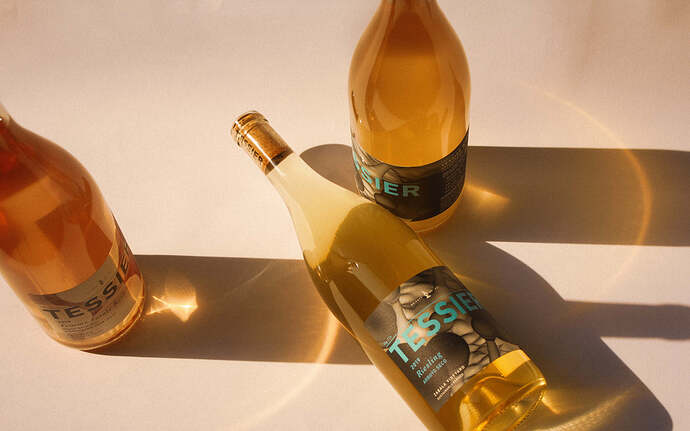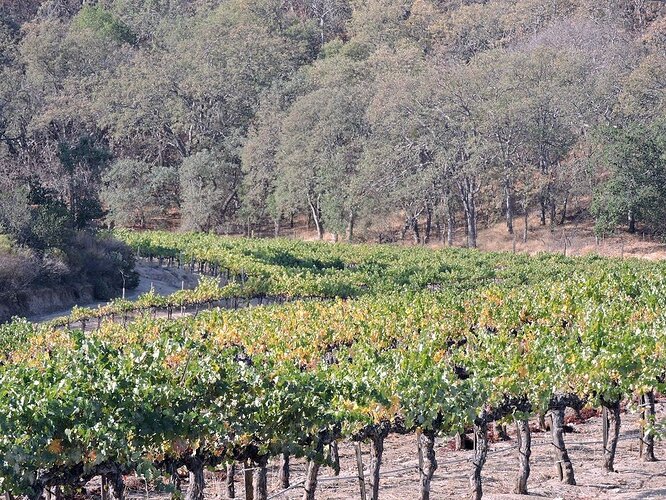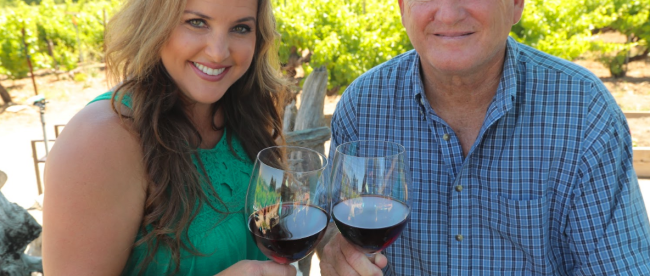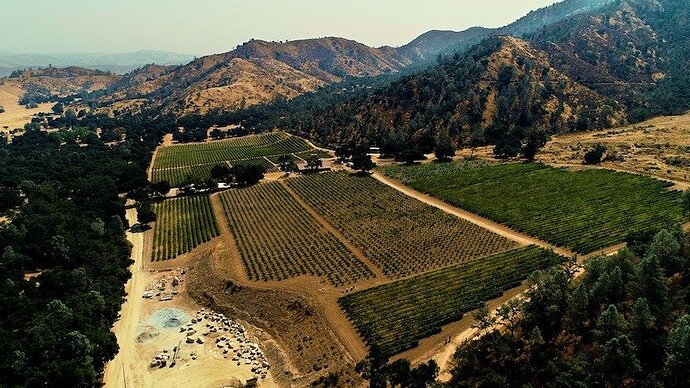I honestly don’t know how I never found this article in my previous searches for Santa Clara Valley producers…
Gilroy Dispatch
“If These Vines Could Talk”
by Gilroy Dispatch Staff
August 27, 2005
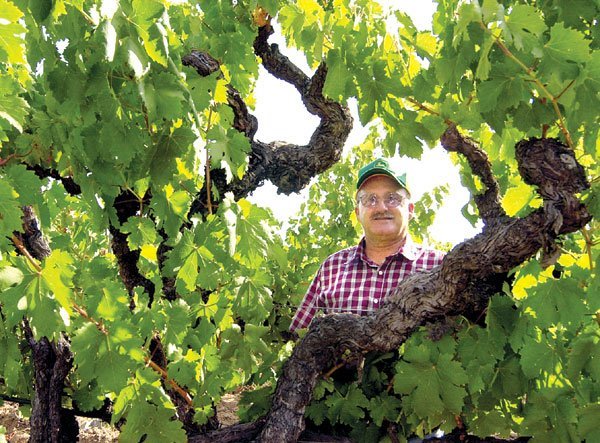
"…‘With an old vine, the characteristics of the grape are just enhanced,’ said Gino Fortino, owner and vintner of Fortino Winery in Gilroy. ‘For wine, that means you get more intense flavor, more color, so the wine quality is a lot better.’
"A growing number of wineries around the globe are cashing in on this flavor, and beginning to put the words ‘old vine’ on their labels, denoting not just varietals, but also the age of their vineyards.
“‘You never did see an old vine description on a label 5, 10, 15 years ago,’ said George Guglielmo, viticulturist for Guglielmo Winery in Morgan Hill. ‘As people become more educated on wine, though, they realize that an old vine gives you more character, so they’re more interested in buying old.’
"…Along Gilroy’s Hecker Pass Highway, the Besson family has been growing grapes for decades. The bulk of their estate is old-vine zinfandel was likely planted in 1922.
“‘My grandfather bought the ranch in 1925, and he ran it, then my dad ran it, so I’m the third generation now, and my daughter is starting to learn so that she can take over,’ said George Besson, Jr., 57. ‘We sell the grapes to Sarah’s Vineyard, but we’re keeping it in the family because you don’t see too many old vines today.’
"That’s partially because old vines, many of which were grown from imported European seed near the turn of the century, have been largely wiped out, between the encroachment of new homes onto former vine land, and the virulence of modern diseases, Besson said.
"‘New varieties of grape are more resistant,’ said Besson. ‘Before you plant, you take a soil analysis, then you buy the grape you want, grafted to the root stock that’s best for your soil. Years ago, they just planted whatever they had, so they’re susceptible to all kinds of diseases.’
"Most older vines have been exposed to soil-borne parasites and pests, and above-ground they’re prone to termite attack, said Guglielmo, so they produce fewer grapes than young vines. Old vines, for instance, will produce 1.5 to 2 tons of grapes per acre in a season compared to the 4 or 5 tons young vines will yield in the same time span, according to Fortino.
"Still, the vines are also relatively resilient. Some 99 percent of them are dry farmed, meaning their root structure goes deep enough that they don’t need watering, said Besson, and they also collect most of their own nutrients.
"‘The biggest problem with any grapes are mildew factors, so the vines have to be sprayed every 10 to 14 days with sulfur to keep them dry,’ Besson said. ‘Now you take leaf analysis, too, so you can see if they’re not getting something below and you can treat the soil.’
“To test the virtue of old vines for yourself, pick up a bottle of Guglielmo zinfandel, in which Guglielmo often uses a mix of old and new grapes for added flavor, or pick up a bottle of Fortino’s old-vine carignan, which just picked up a silver medal at the Los Angeles County Fair.”
Fortino Winery website:
Guglielmo Winery website:
Historic Vineyard Society “Besson Vineyard” profile:
